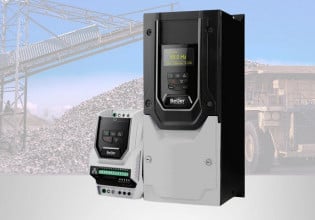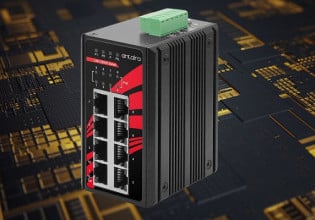Emerging Technologies for Industry 4.0: Data Processing and Management
Using artificial intelligence, drone technology, control loop optimization, operational technology data corroboration, and management software to achieve Industry 4.0 operations.
We have heard plenty of news about developments in many areas of digital technology, particularly in regard to data, over the past years.
In this article, we’ll explore some of the hardware and software innovations that are tackling the influx of operational technology (OT) data and actively implementing OT and information technology (IT) convergence to improve information transfer, data security, and overall operational performance for industrial facilities. We will also explore the use of artificial intelligence (AI) and drone technology to collect and monitor emission data, helping reduce harmful pollutants while maintaining plant productivity.

Companies are leveraging drone technology, AI, and advanced software to effectively inspect and monitor OT systems while gathering and managing industrial data. Image used courtesy of Pixabay
Koch - AI and Drones for Unmanned Inspection
Earlier this year, Kansas-based Koch Engineered Solutions (KES) announced its collaboration with Percepto, focusing on providing customers with an AI-driven, drone-mobilized approach to facility inspection to enhance safety, assess risk, improve operational performance, as well as control and reduce emissions.
The engineering construction company, Koch Specialty Plant Services (KSPS) is a subsidiary of KES and offers industrial customers turnkey solution project delivery. Through their partnership, KES is offering a turnkey solution package comprised of Percepto's portfolio of AI-powered, gas and thermal detection drone technologies, Percepto Air Max Optical Gas Imaging (OGI and Percepto Air Max).
The Percepto Air Max drone comes with a high-definition thermal camera to aid thermal detection and inspection. To locate equipment failures, electrical problems, and energy inefficiencies, it independently monitors and analyzes temperature patterns. This proactive method aids businesses in early problem detection, energy usage optimization, and breakdown or accident avoidance.
The Percepto Air Max OGI uses an optical gas imaging camera to locate and view hazardous gas leaks in industrial settings. It uses advanced AI algorithms and sensors to detect such gases.
Belden - Operational Systems Management
The widespread implementation of Industry 4.0 processes and the Industrial Internet of Things has led to a profusion of linked devices and the production of huge quantities of OT device-generated data.
Recently, Belden Inc. released two of its latest edge applications as part of its Belden Horizon edge coordination software and remote connectivity platform.
Belden Horizon Data Operations (BHDO) and Belden Horizon Data Manager (BHDM) enable industrial organizations to regulate this growing volume of data and acquire beneficial insights. BHDO, in particular, is a perfect example of the convergence of information technology and OT. At the network edge, OT data is gathered and analyzed by the BHDO solution. This data can be effectively transferred to and connected with IT sites for further examination, interpretation, and action through IT/OT convergence.
IT/OT convergence allows for more efficient interaction, information transfer, and integration across the two respective domains by spanning the divide between IT and OT systems.
As demonstrated by the BHDM solution, IT/OT convergence provides businesses with the opportunity to scale up their operations and centralize the management of remote deployments. Distributed BHDO installations across numerous sites or facilities are monitored, controlled, and coordinated thanks to this centralized management feature.
Control Station - Improving Plantwide Operations
PlantESP software, developed by Control Station, is a tool for improving control loops and increasing plant productivity efficiency by using historical data. It actively tracks the effectiveness of the control loops throughout all plant locations, offering insightful information and timely alerts for various problems (such as proportional–integral–derivative or PID controller tuning and mechanical issues) that may arise.
Control Station provides a brief overview of its control loop performance monitoring solution, PlantESP. Video used courtesy of Control Station
Utilizing industry-standard protocols, PlantESP interacts with notable historians, including AVEVA PI System, Canary Labs, and others. A calculating engine, a visualization engine, and system operations are all included in the software. The key performance indicator (KPI) metrics, boundary setting, analysis, power spectrum, cross-correlation, and recommendations for corrective actions are all handled by the calculation engine. The visualization engine offers notes, reports, trends, gauges, and alarms. Application management and historical communication are two examples of system operations.
Technological Developments for Industry 4.0
The world is certainly heading in the direction of increasing digitalization. Much of this technology is designed under layers of software and hardware, and it’s important for control engineers to remain aware of developments in order to understand which concepts will apply to local processes to drive future production.






